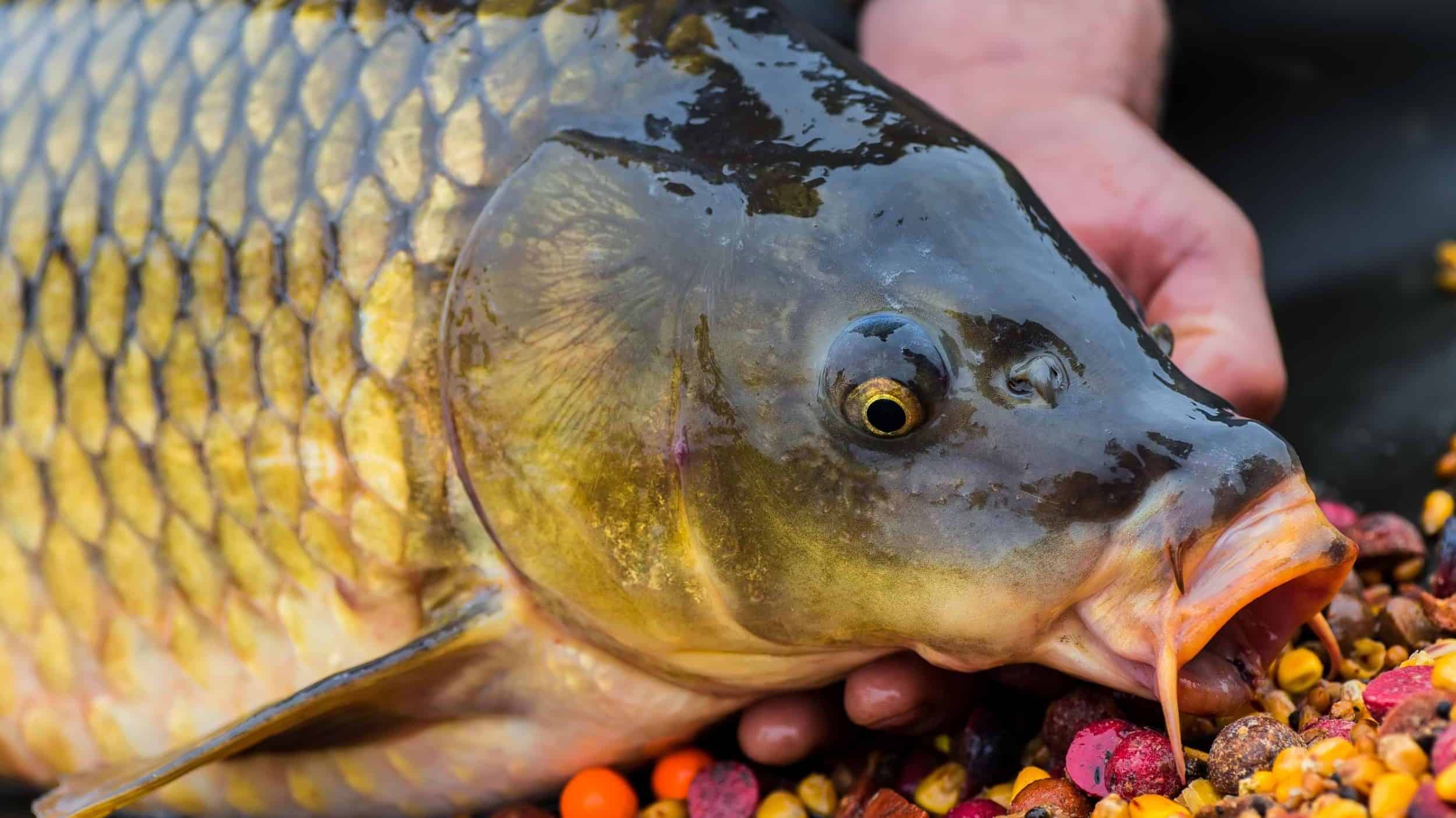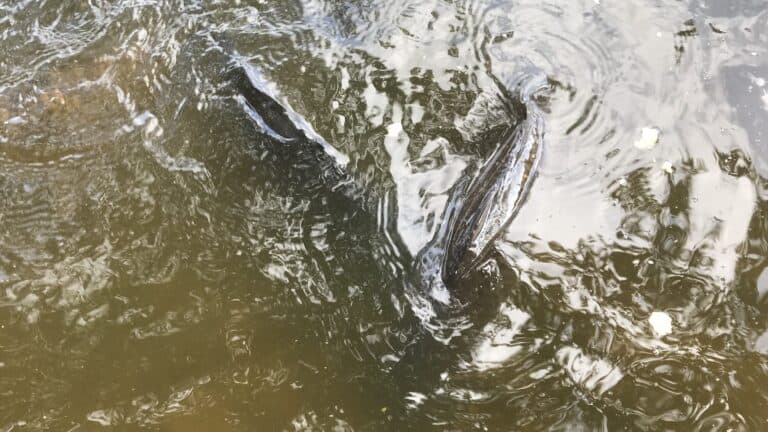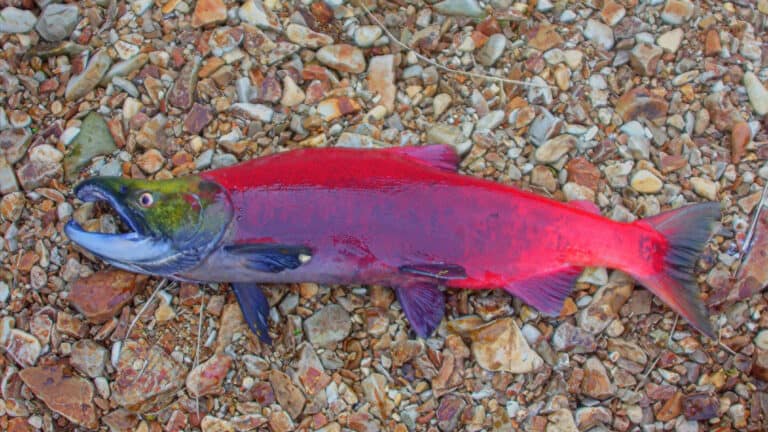Why Do Fish Have Slime – Truths & Myths Uncovered

Fish slime or Epidermal Mucus is a glycoprotein and its main purpose is to protect the fish from pathogens. The slime contains enzymes and antimicrobial peptides that break down protein covers, thus rendering the pathogens harmless.
Slime can play various other roles across different species of fish, but holistically speaking, it is there to protect the fish from bacteria. Most fish essentially have three layers of protection. Firstly, they have skin, followed by scales, and lastly slime. Collectively they work together to ensure that the fish is as well protected as possible from the elements and any natural predators. A fish’s slime is imperative to its survival. If its protective mucus was removed it would become vastly more susceptible to disease and would likely die.
Those of you who’ve held fish will know just how slippery fish are. However, most people speculate that the fish have slime to make them slippery and thus harder for predators to catch. But in truth, the mucus protects the fish against much smaller creatures. Bacteria.
Why Fish Need Slime To Survive
Fish need Epidermal Mucus because water can be filled with bacteria and pathogens. In wild, the water is unregulated and unfiltered, and all kinds of impurities can be found in wild waters. Its actually rather similar, conceptually speaking, to the way humans prevent pathogens from entering our system.
Like the fish, we have skin that prevents pathogens from simply entering us through contact. Similarly, we also have mucus in our nostrils along with earwax in our ears. Both of these are produced to prevent unwanted entities from entering our system.
The only difference is that fish need more protection so their entire bodies need to be coated with Epidermal Mucus. Think of the Epidermal Mucus as an antibacterial or sanitizer for the fish. It is a form of immunity for the fish and is the primary defense against pathogenic microbes.
How Fish Produce Slime
Fish secrete the Epidermal Mucus from their skin. They create the slime through a variety of Epithelial cells that are found on their skin. However, you can tell a lot about a fish from the type and quantity of slime that you find on their bodies. If you’d like to learn more about this, we’ve linked an interesting study on Epidermal Mucus: A Major Determinant In Fish Health.
Fish that live in water that is particularly polluted or carrying disease will often have more slime than fish that live in purer waters with good health. Take for instance the Common Bream. In the United Kingdom, Bream are notorious for being incredibly slimy. However, the reasoning behind this is rarely explored.

First of all, fish like Bream predominantly live in canals that are heavily polluted and full of pathogens. Secondly, Bream are considered attractive to parasites, particularly when they are young, so in order to combat this problem, they produce much more slime than you’d typically find on a fish. Fish will also create more Epidermal Mucus when they are unwell. The amount of secretion will vary depending on the health of the fish, the quality of the water, and the species.
Does Touching A Fish Remove Slime
No, touching a fish will not remove a significant amount of protective slime, especially if you’re hands are wet and you don’t handle the fish for a prolonged period of time. A lot of people are under the impression that touching a fish will remove the slime which will lead to you causing damage to the fish. However, this isn’t usually the case.
There are lots of horror stories about people touching their pet goldfish which leads to its skin burning and the fish ultimately dying. However, in reality, its completely fine to touch a fish with your bare hands, providing that your hands are clean and free from any chemicals like soap and antibacterial. Ideally, you also want to wet your hands before touching the fish because the secretions only formulate into Epidermal Mucus once they come in contact with water.
However, if you handle a fish with gloves or any kind of fabric, this could definitely remove the mucus from the fish which could potentially cause issues. This is because fabrics and dry and the mucus sticks to them very easily which leads to large amounts of mucus being removed from the fish’s body. This means that when it is returned to the water, its health will be compromised as it won’t have all the necessary mucus to protect it from pathogens immediately. The Epithelial cells will start to produce more slime but if the fish comes into contact with pathogens at that time, it will be more susceptible to disease.
Species Of Fish That Have The Most Slime
There are a few species of fish that come to mind in regard to slime. But generally speaking, its rare to find a species that is sustainably slimier than most fish species. This is because all fish are slimy! Epidermal Mucus is fundamental to all fish species but there are a few that have a reputation for holding onto larger amounts of mucus. Most notably the Hagfish secretes slime to ward off predators, unlike most fish which only use slime to protect themselves from pathogens.
| Fish Species | Average Size |
|---|---|
| Hagfish (Myxini) | 8oz |
| Common Bream (Abramis Brama) | 3lbs |
| Wels Catfish (Silurus Glanis) | 60lbs |
| Tench (Tinca Tinca) | 4lbs |
| Rainbow Trout (Oncorhynchus Mykiss) | 5lbs |
| Common Roach (Rutilus Rutilus) | 15oz |
| Rudd (Scardinius Erythrophthalmus) | 3lbs |
Are There Any Fish Without Slime
Nope. Every fish produces Epidermal Mucus as it is imperative for survival in the water. There are some fish that can survive outside of the water but even then they still need Epidermal Mucus in order to survive. For instance, there are several species of catfish that can survive for incredibly long periods of time, sometimes months and even years, without having direct contact with water.
However, they still need to occupy wet mud because that allows them to maintain the mucus on their bodies which not only allows them to protect themselves from pathogens. But it also allows them to breathe by absorbing oxygen transdermally through a process called cutaneous respiration.
Conclusion
Fish have slime on their bodies because they need it. Its fundamental to their defense mechanism against pathogens. Just like how humans produce mucus and earwax in order to prevent unwanted things from entering our systems and causing damage to us, fish have Epidermal Mucus to protect them from all the harmful pathogens that are often found in water.







